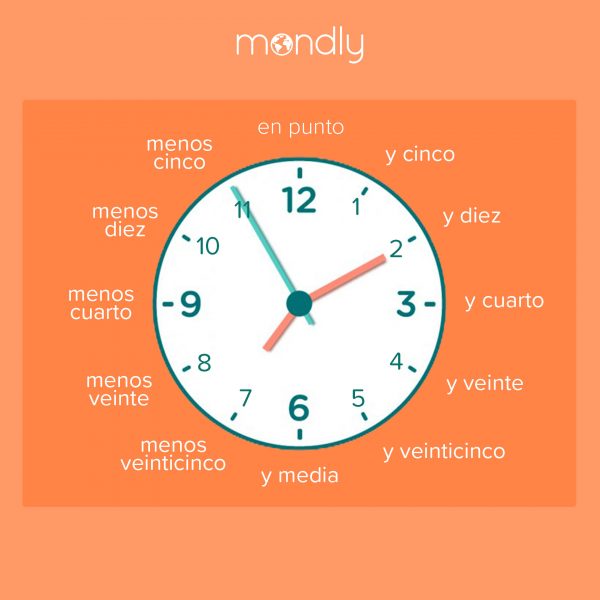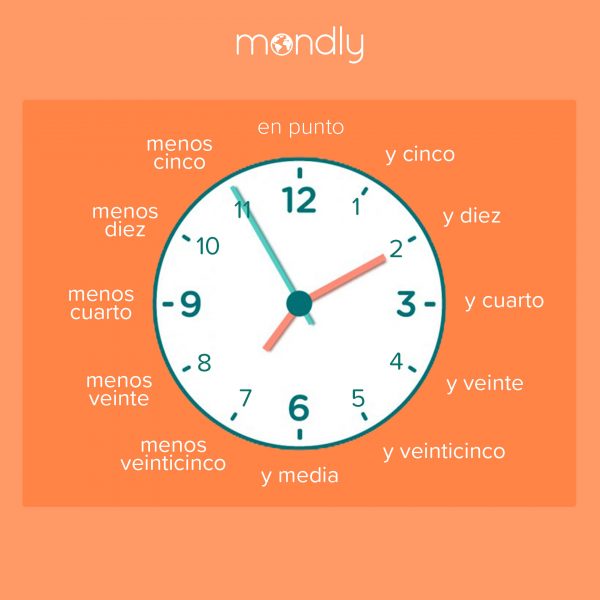How to Write Time in Spanish. It might seem like a daunting task to learn the correct words and syntaxes for telling time in Spanish, but it is actually very easy. In fact, once you have a system in place that helps you keep track of the different verb conjugations that exist, you will find it much easier to remember how to say different times in Spanish.
If you’re finding it difficult to determine how to write a specific time in Spanish, then you’ve come to the right place. In this post, I will show you how to write each time in an easy-to-follow manner.
¿Que hora es? It’s high time we learned how to answer to this world-renowned question.

¿Que hora es? demands an answer! And no, we’re not talking about the Mexican soap opera for people who only had 3 weeks of Spanish in the 4th grade (wink wink). In all seriousness, how do you reply to the question that has been on everybody’s lips at one point? How do you tell time in Spanish? Well, it’s time (wink wink) to find out.
I know what you think and it’s true. We’re lucky enough to live in an era of rapid technological advancements. Even if you don’t own a watch, you probably have a smartphone. Asking or telling the time in Spanish or any other language may seem obsolete. But what if your phone’s battery is dead? I for one had a pretty interesting experience when I had to survive one week without a phone. I kept asking random people the time to make sure I wasn’t late and they looked at me like I was some kind of an alien. So yeah, knowing how to tell the time in Spanish can make all the difference!
But first things first.

Table of Contents
¿Que hora es? – how to ask for the time in Spanish
In order to tell the time in Spanish, you’ll first have to learn how to properly ask for the time in Spanish. You can never be too cautious. I’m just making sure you’re not missing that fiesta española you spent weeks thinking about!
In addition to the now well-known ¿que hora es? which literally translates to “what hour is it?”, you can also ask ¿tiene hora? which is literally “do you have the hour?”. Easy enough!
The basics of Spanish time
To decir la hora (“tell the time”) in Spanish, there are a few simple rules you’ll have to know.
First of all, always use the verb ser. No, not estar, but ser. If you don’t know what Spanish verbs are all about, you might want to check this little guide for beginners. To put it simply, time is a permanent entity that requires the use of the verb ser.
Secondly, remember that only when talking about one o’clock, you’ll need to use the third person singular form of ser. For all the other eleven hours, you can safely go with the plural form. Here’s how to tell the time in Spanish if the time is on the hour:
- Es la una. – It’s one o’clock.
- Son las dos. – It’s two o’clock.
- Son las tres. – It’s three o’clock.
- Son las cuatro. – It’s four o’clock.
- Son las cinco. – It’s five o’clock.
- Son las seis. – It’s six o’clock.
- Son las siete. – It’s seven o’clock.
- Son las ocho. – It’s eight o’clock.
- Son las nueve. – It’s nine o’clock.
- Son las diez. – It’s ten o’clock.
- Son las once. – It’s eleven o’clock.
- Son las doce. – It’s twelve o’clock.
As you can see, the feminine article (la/las) is used before the number. Why is that? Well, because it refers to la hora. But again, remember that the singular form la will only be used in the case of “one o’clock” because we’re talking about a single hour.
Nota bene: If you prefer to use the 24-hour clock, you should say son las dieciséis (“it’s 16:00”) instead of son las cuatro (“it’s 4 o’clock p.m.”). But that will require a little more studying on your part. Don’t worry though. Spanish numbers are just as easy as learning how to tell the time. You can master them with Mondly faster than you can say Jack Robinson. You can get started here.
How do you say the time in Spanish after 30?
Now, the time is not always on the hour. So how do you say “half past”, “quarter past” and “quarter to” in Spanish? There are only two new words you need to remember: media and cuarto.
- If it’s half past the hour in Spanish, use the phrase y media;
- If it’s a quarter past the hour, use the phrase y cuarto;
- If it’s a quarter until the hour, use the phrase menos cuarto.
Here are some examples:
- 2:30 – Son las dos y media. – It’s two thirty.
- 1:15 – Es la una y cuarto. – It’s one fifteen.
- 5:45 – Son las seis menos cuarto. – It’s a quarter until six.

Hour + minutes in Spanish time
Wanna be a little more specific? Here’s how Spanish time works when you need to indicate the exact number of minutes that have past from the hour.
The simplest formula is es/son + las + hour + number of minutes. For example, if you want to say that it’s 3:29, you’ll say son las tres veintinueve.
Thus, the same as in English, there will be two ways in which you can indicate some hours in Spanish. If it’s 8:15, you can say:
- Son las ocho y cuarto. (“it’s a quarter past eight”)
- Son las ocho y quince. (“it’s eight and fifteen minutes”)
Different ways of telling time in Spanish
There are three formulas of telling time in Spanish. Here are different ways of telling it’s 3:10:
- es/son + las + hour + number of minutes – Son las tres diez
- es/son + las + hour + y + number of minutes – Son las tres y diez
- es/son + las + hour + con + number of minutes – Son las tres con diez
Which one do you prefer? Additionally, if we also count it cuarto and media, there are no less than four different ways to tell the time in Spanish. And you’ve just mastered them all!
How to indicate the time of day in Spanish
If you are using the 12-hour clock, you sometimes might want to also point out the time of day. For instance, “it’s two in the afternoon” translates to son las dos de la tarde in Spanish. Not too complicated, is it? Here are some more times of day that might come in handy:
- mediodía – midday
- mañana – in the morning
- noche – at night
- madrugada – the middle of the night
- medianoche – midnight
- amanecer – dawn
- tarde – in the afternoon
To indicate that an event occurs at a specific time, use the formula a + la(s) + time: La clase de español empieza a las nueve – “The Spanish class begins at 9”.
Other useful time phrases in Spanish
- por la mañana – in the morning
- por la tarde – in the afternoon
- de la tarde – in the afternoon
- al mediodía – at noon
- a la medianoche – at midnight
- por la noche – in the evening or night
- de la noche – in the evening or night
- la mañana – morning or tomorrow
- mañana por la mañana – tomorrow morning
- pasado mañana – the day after tomorrow
- tarde – late
- temprano – early
- en punto – exactly or sharp (son las ocho en punto – “it’s exactly eight o’clock”)
- ayer – yesterday
- anteayer – the day before yesterday
- anoche – last night
- la noche anterior, anteanoche – the night before
- last el lunes que viene – next Monday
- el lunes pasado – last Monday
- la semana que viene – next week
- semana por medio – every other week
- la semana pasada – last week
- el año que viene – next year
- el año pasado – last year
- durante el día – during the day
Conclusion
Learning a foreign language can be hard, especially when you get to the Spanish language and their measurement of time. In the United States, we use the 12-hour clock in everyday conversation, with a.m. and p.m. But not all countries in the world use this method of telling time. Some countries use twenty-four hour clocks while some just prefer to express time in terms of a.m./p.m. And then some other countries just create their own way of telling time! Confusing, right?
